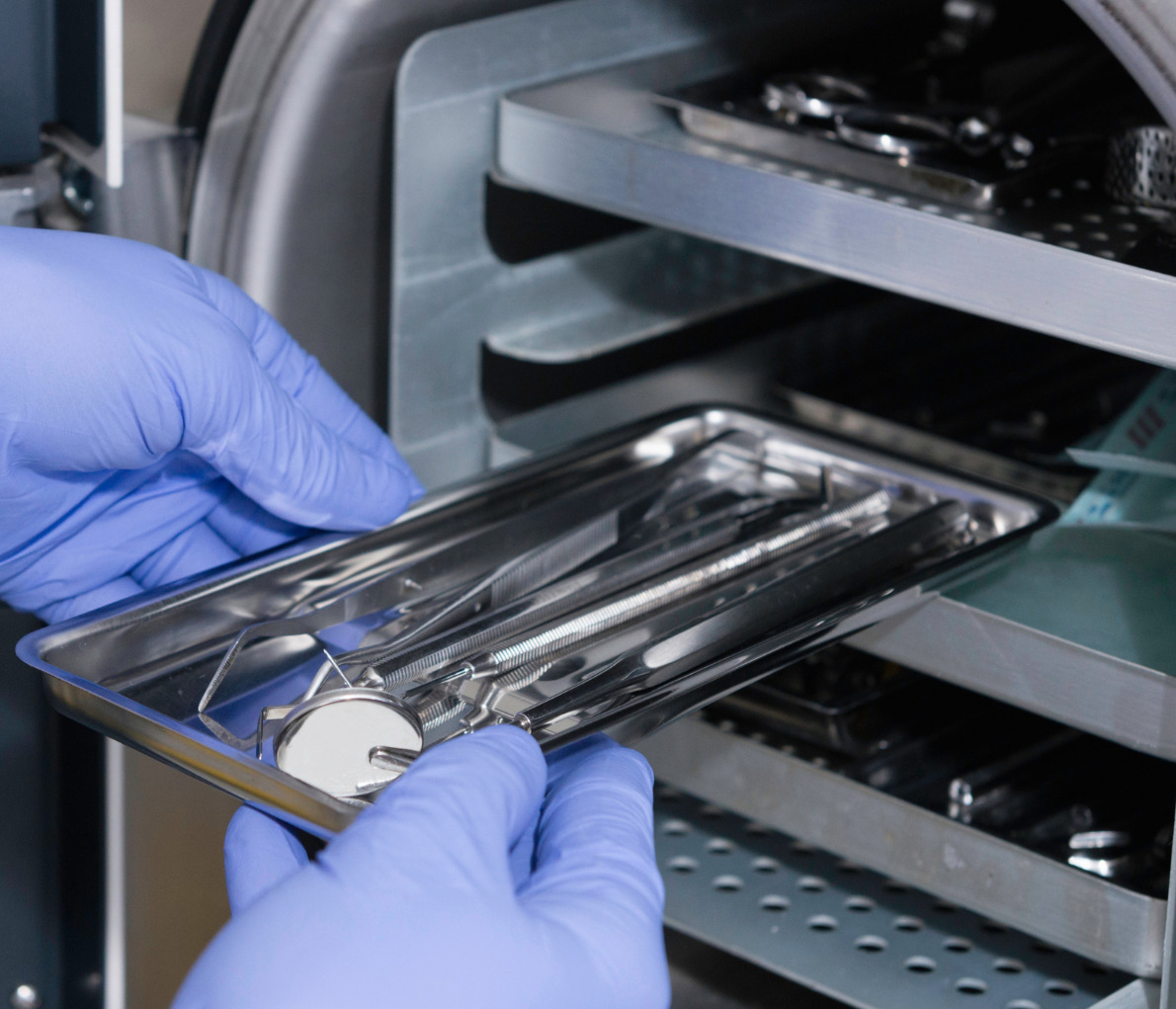FILLAMENTUM MAG #1
Fillamentum celebrates 10 years! What does it mean for the CEO?
Fillamentum celebrates a significant milestone this year – ten years on the 3D printing market. During this time, it has managed to build a strong position through constant innovation, a focus on quality and a focus on sustainability. Founder and CEO Josef Dolecek recounts the key moments of this journey – from the introduction of revolutionary materials such as Timberfill and NonOilen to international successes and collaborations. Look back with us at a decade of success and discover what the future of 3D printing holds with Fillamentum. And much more in the first edition of Fillamentum Mag…

What Can You Read in the Magazine?
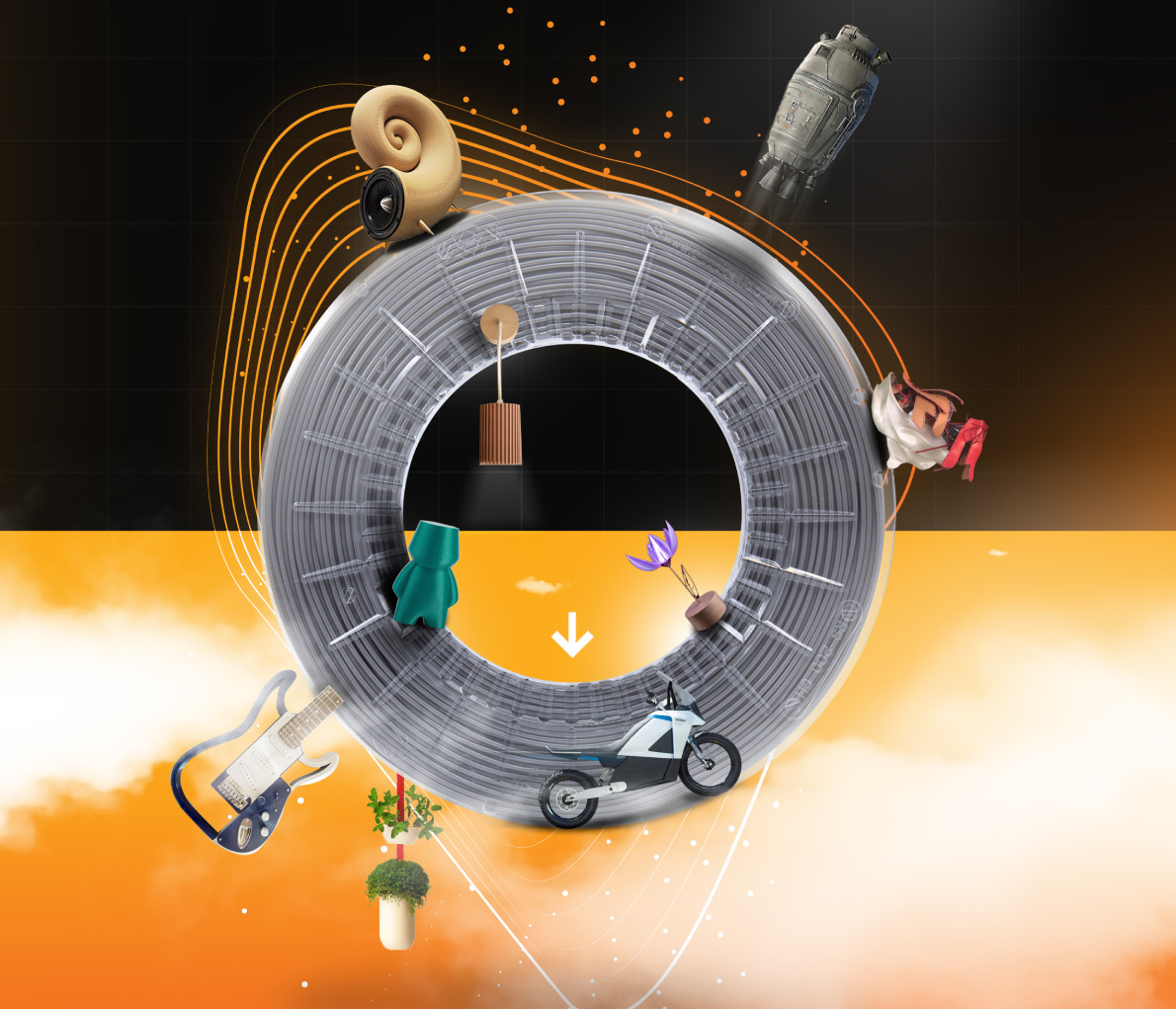
Fillamentum Celebrates 10th Anniversary
The Main News of the Month

NonOilen - Game-changer in 3D printing
Material of the Month
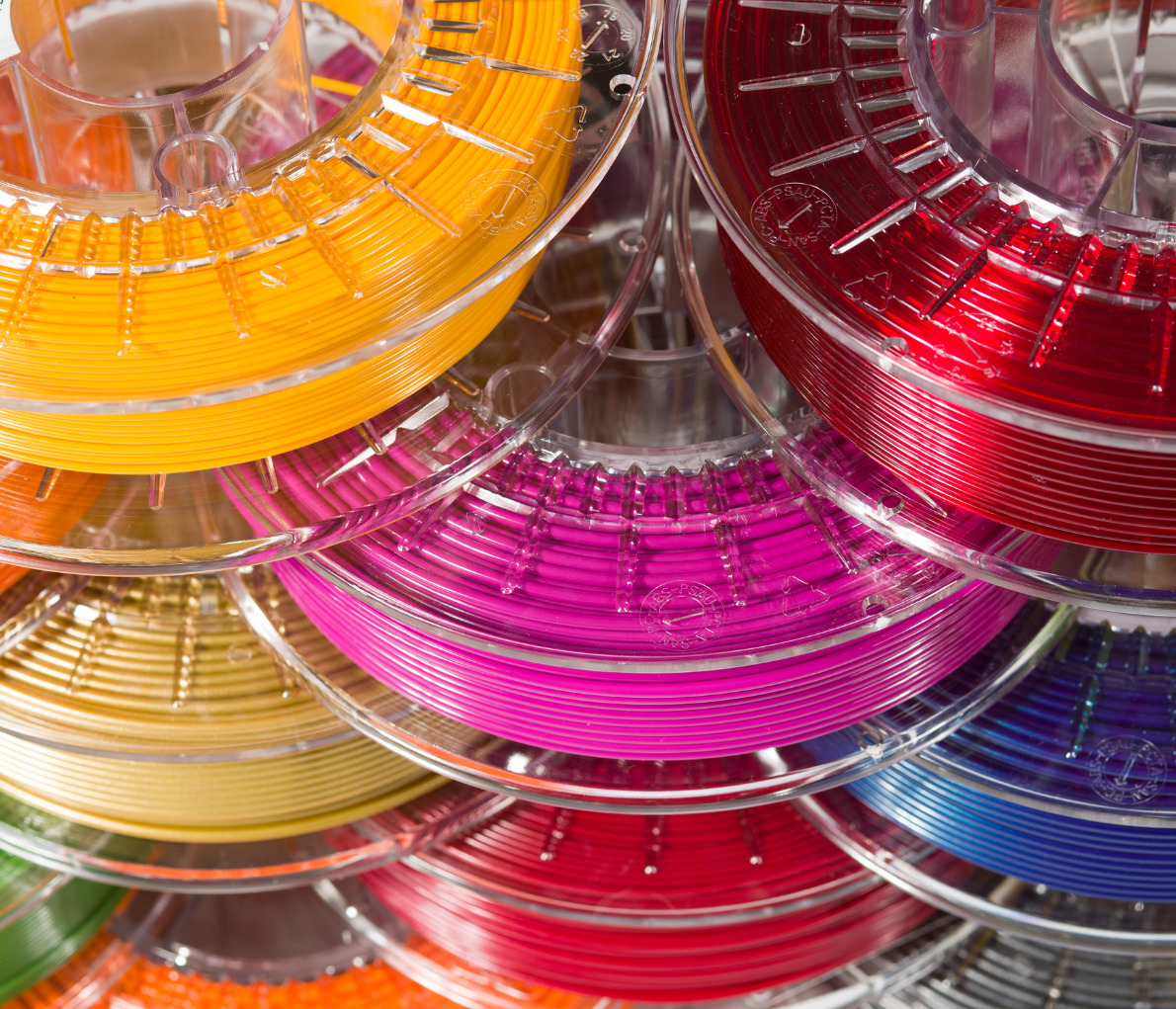
Choosing the Right PLA Filament for Your Business in 2024
Contribution from the Raise3D Editorial Team

Creator Spotlight: Coffee2Go Cup by SKATCH3D
The Work of our Customers

Welcome to our New B2B Program
News from Fillamentum
Insights from our team
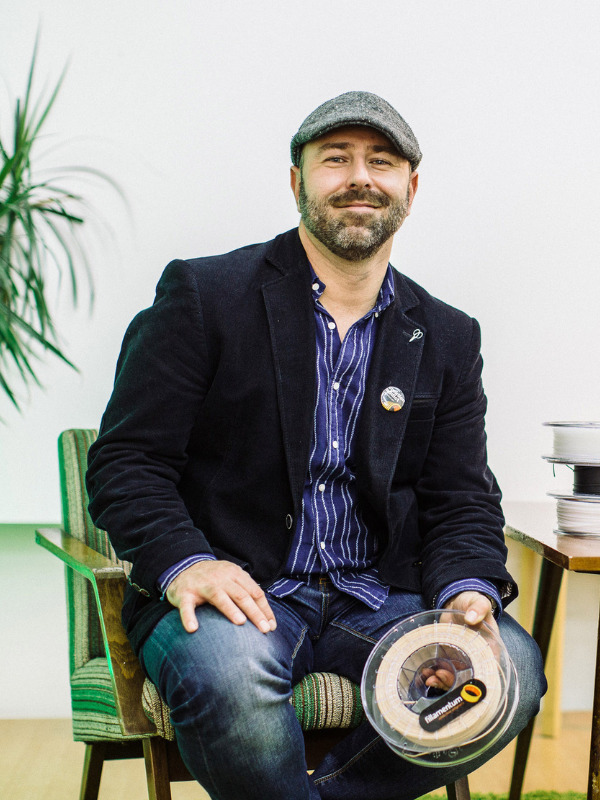
Josef Doleček | CEO & Founder
“3D printing isn’t just a tool, it’s a gateway to endless possibilities. It enables us to turn creative visions into tangible reality, breaking traditional limitations in manufacturing and design. Through constant innovation, we’re able to explore new ways of shaping the future, offering solutions that were once unimaginable. And now, with an incredible 10 years behind us, we’ve seen firsthand how this technology has evolved, continually pushing the boundaries of what can be achieved. As we move forward, we remain dedicated to unlocking new potential with 3D printing, opening doors to discoveries that are still waiting to be explore.”
The Main News
 Written by Martin Opustil
Written by Martin Opustil
Fillamentum Celebrates 10th Anniversary
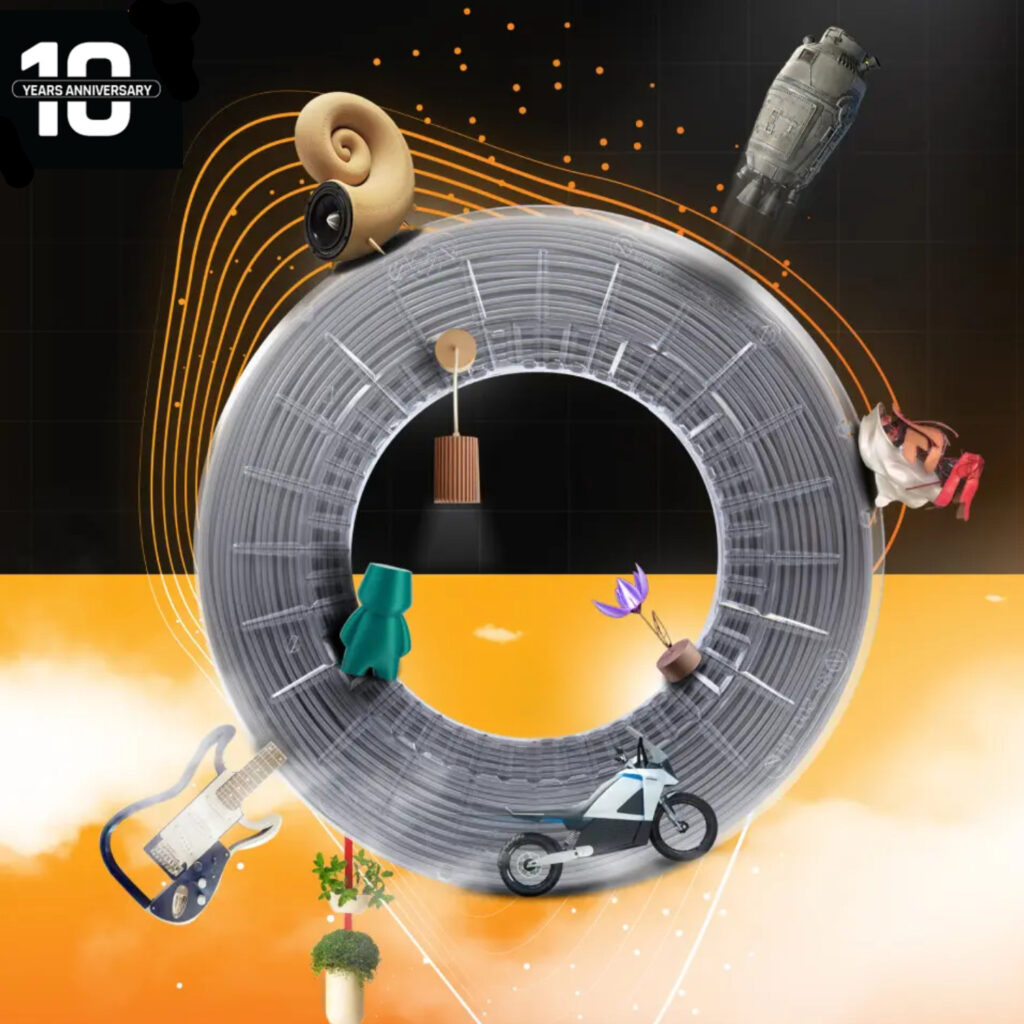
As we proudly celebrate our tenth anniversary, Fillamentum reflects on a decade of innovation and commitment to quality in the 3D printing industry. Founded with the goal of delivering superior filaments to the market, we have navigated challenges, embraced sustainability, and fostered creativity. To commemorate this milestone, we spoke with our founder and CEO, Josef Doleček, who shared insights into our journey, the achievements that define us, and the exciting future that lies ahead. Join us as we look back on our accomplishments and forward to what’s next in the world of 3D printing.
An Interview with CEO Josef Doleček
Retrospective and History
MO: How did Fillamentum come into existence?
JD: Everything began when I heard Josef Průša speaking about 3D printing on the radio. I realized that we could produce filaments and recognized an opportunity to offer a higher-quality product than what was available on the market. The first step was collaborating with the company Aroja, which was looking for quality materials for its printers. We introduced our first filaments at the 3D Expo in 2014, marking the start of our journey.
MO: What were the main challenges at the beginning?
JD: The biggest challenge was building the Fillamentum brand and gaining trust in the market. Every aspect of business, from production to marketing, was new to me.
MO: How did the development of Timberfill and the collaboration on the first wooden speaker unfold?
JD: I had a vision to offer creative materials, and wood emerged as an intriguing subject. After numerous trials, we found the right combination, and Timberfill was born. We partnered with the design studio Akemake, which created the first wooden speaker from it. This speaker then gained international attention thanks to media coverage.
Successes and Innovations
MO: What are Fillamentum’s most significant achievements?
JD: I consider our unwavering commitment to high-quality standards a success. We were the first to introduce filaments according to RAL color standards and with color effects. Our Vertigo Grey has inspired other manufacturers, and our goal also includes ecological sustainability.
MO: Which innovations were challenging yet successful?
JD: Every new material requires hours of development and testing. Sometimes, these are complex projects, such as electrically conductive materials, while even simple color changes can take months.
MO: What drives you to create new colors?
JD: In the early days of the market, filaments were dull and unremarkable. We wanted to offer a wide palette of colors based on industry standards to cater to designers and artists.

Source: CZ EXPO | Receipt of the Commissioner General’s Award for Czech participation at EXPO2020 in the category Most Significant Contribution to Sustainability
Market and Customers
MO: How has the 3D printing market changed over the past decade?
JD: The market has matured and is transitioning to professional additive manufacturing. Printers have become faster, more reliable, and user-friendly. We have adapted by developing new materials for professional users.
MO: What significant collaborations do you remember?
JD: Many collaborations have brought us valuable experiences. The story of the wooden speaker is iconic for us, but we’ve also had projects such as printing parts for the inauguration of the First Lady of the Czech Republic.
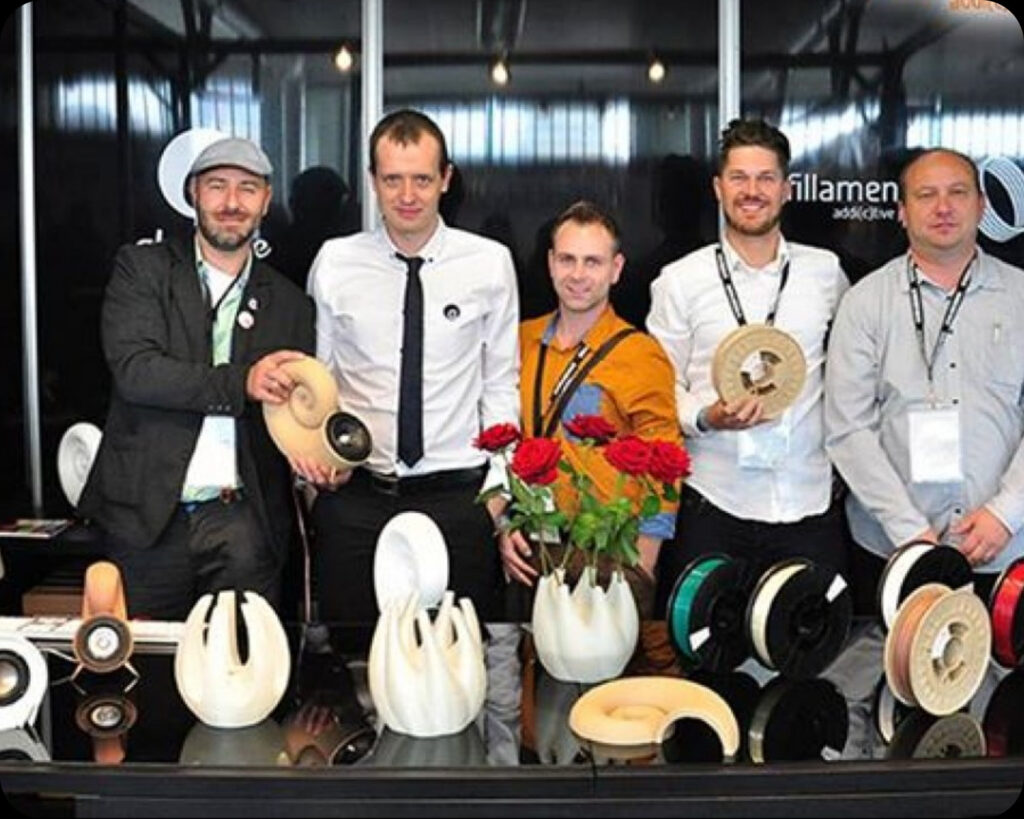
Source: Fillamentum | Fillamentum team at its first world trade fair
Future and Vision
MO: What are the plans and goals for Fillamentum?
JD: We continue with a long-term strategy. We are unifying the visual aspects and packaging with an emphasis on sustainability. Our spools are made from recycled materials and are easily recyclable.
MO: How do you plan to maintain and develop your market position?
JD: We are striving for global expansion, even though the pandemic and changes in logistics have impacted us. We feel that now we can work with the new conditions.
Personal Perspective and Sustainability
MO: What does the tenth anniversary of Fillamentum mean to you?
JD: It is an incredible experience. The past ten years have been about innovation, collaboration, and exploring new horizons. I am happy that we can positively represent our country.
MO: How important is sustainability to you when developing new products?
JD: Sustainability is crucial. I believe we have a responsibility to produce in an environmentally friendly manner. Nonoilen is an example of a material that is natural, recyclable, and biodegradable. It’s also important to combine recycling and waste sorting for a better future.
Material of the Month
 Written by Barbora Jurčová
Written by Barbora Jurčová
NonOilen - GaME-CHANGER IN 3d pRINTING
In today’s world, the focus on a responsible approach to natural resources has led to the emergence of numerous sustainable alternatives in the market. Among these innovations, NonOilen stands out as one of the pioneering sustainable materials in the realm of 3D printing. This remarkable filament, crafted from 100% renewable resources, has garnered a strong following among eco-conscious 3D printer users over the years.
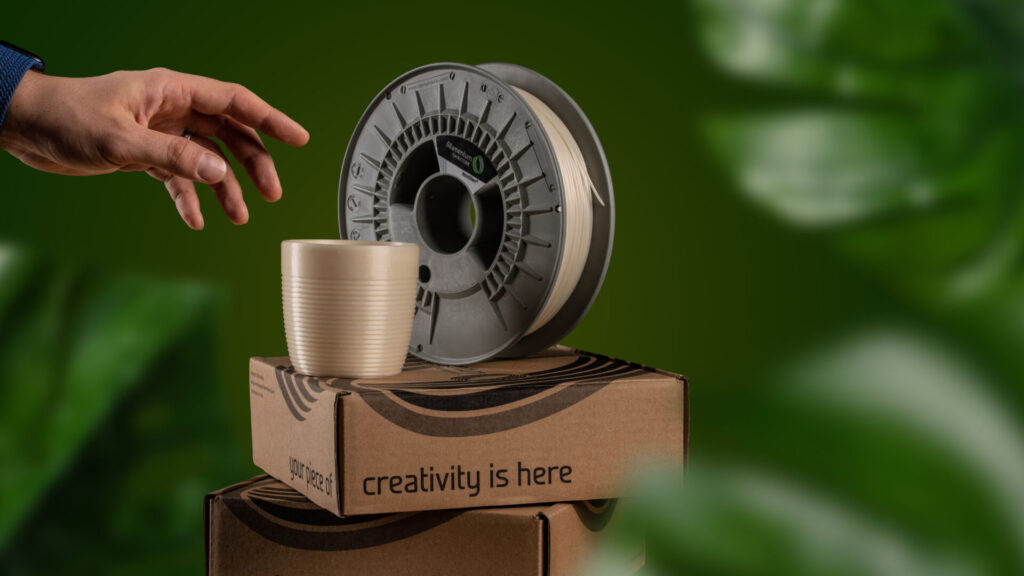
Did You Know that…
NonOilen was officially launched in 2021, and this achievement helped Fillamentum secure a position in the prestigious 3D Printing Industry Awards in the “Material Company of the Year” category. This award beautifully underscores Fillamentum’s commitment to sustainable innovation and the significant impact NonOilen is making in the world of 3D printing.
CASE STUDIES
The Story of Its Creation
The inception of NonOilen was no mere coincidence; it represents over 20 years of dedicated research and development by a team led by Prof. Ing. Pavol Alexy, Ph.D., from the Slovak Technical University, in collaboration with Panara, a leader in biodegradable polymer research. The core concept behind NonOilen revolves around utilizing only natural raw materials, specifically designed to eliminate fossil oil usage—hence the name “Non-Oil.” The result is a material that not only boasts significantly enhanced properties compared to PLA but also alleviates concerns regarding long-term environmental impact. Notably, the optimization process for 3D printing alone took around five years, with the primary challenge being to ensure that the material could withstand multiple thermal processes while effectively passing through the print nozzle.
Key Features
NonOilen’s attractive characteristics appeal to a diverse range of users. At first glance, it captivates with its velvety appearance and subtle shimmer. Composed of a blend of polylactic acid (PLA) and polyhydroxybutyrate (PHB), the inclusion of PHB enhances the material’s toughness, temperature resistance, and especially its biodegradability compared to standard PLA. NonOilen can be printed on conventional 3D printers with the same ease as PLA, and its temperature resistance exceeds that of typical PLA, allowing for usage at temperatures up to 115 °C without the need for thermal annealing. Additionally, its recyclability enables the reuse of print scraps without loss of quality, thereby minimizing material waste. NonOilen is also suitable for food contact, and prints can be safely washed in a dishwasher.
Biodegradable: The Future of Waste Management
One of NonOilen’s standout features is its biodegradability. While traditional plastic materials can persist in the environment for centuries, contributing to the global crisis of microplastics, NonOilen can fully degrade in industrial composting facilities, certified ‘OK compost INDUSTRIAL’ according to EN 13432. To biodegrade, it requires a minimum temperature of 55 °C, adequate moisture, and the presence of decomposing microorganisms. Impressively, NonOilen decomposes in just 90 days, a significantly faster rate compared to PLA.
Why Choose NonOilen?
Opting for NonOilen is not only an environmentally responsible choice but also a practical one. Its high-temperature resistance makes it ideal for prototyping and various 3D printing applications. NonOilen’s suitability for food contact, alongside its dishwasher-safe and autoclave-sterilizable features, further enhances its appeal. For those looking to merge sustainability with performance, NonOilen is the clear choice.
Areas of Success
Since its market introduction, NonOilen has demonstrated its effectiveness across a variety of sectors. Notable projects include eco-friendly design products such as designer shoes by Oldrich Voyta, innovative LED lighting by Shoplight, and countless coffee cup designs. Its functional applications also include critical components, like gears in the rotary system for painting cylindrical parts at Fremach and an organic-shaped cyclone chip extraction adapter for CNC machines at CNC-Konecny. Additionally, NonOilen was showcased at EXPO 2020 in Dubai within the Sustainability Pavilion.
Conclusion
In summary, NonOilen is not just a material of the future; it embodies the proof that responsible innovation can harmoniously coexist with technological advancement. With its rich history of development, outstanding features, and diverse applications, NonOilen paves the way for a more sustainable future in 3D printing.
New Case Study
 Written by Gabriela Vašťáková
Written by Gabriela Vašťáková
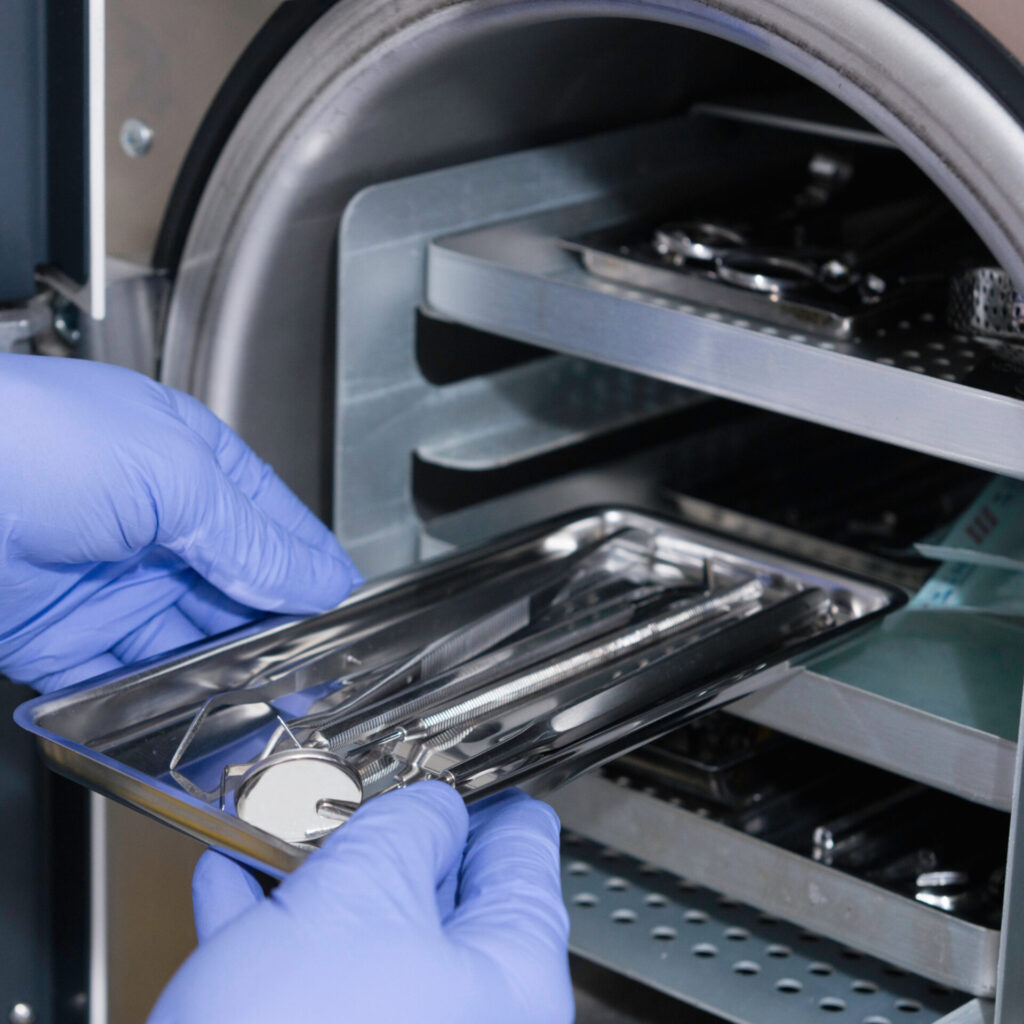
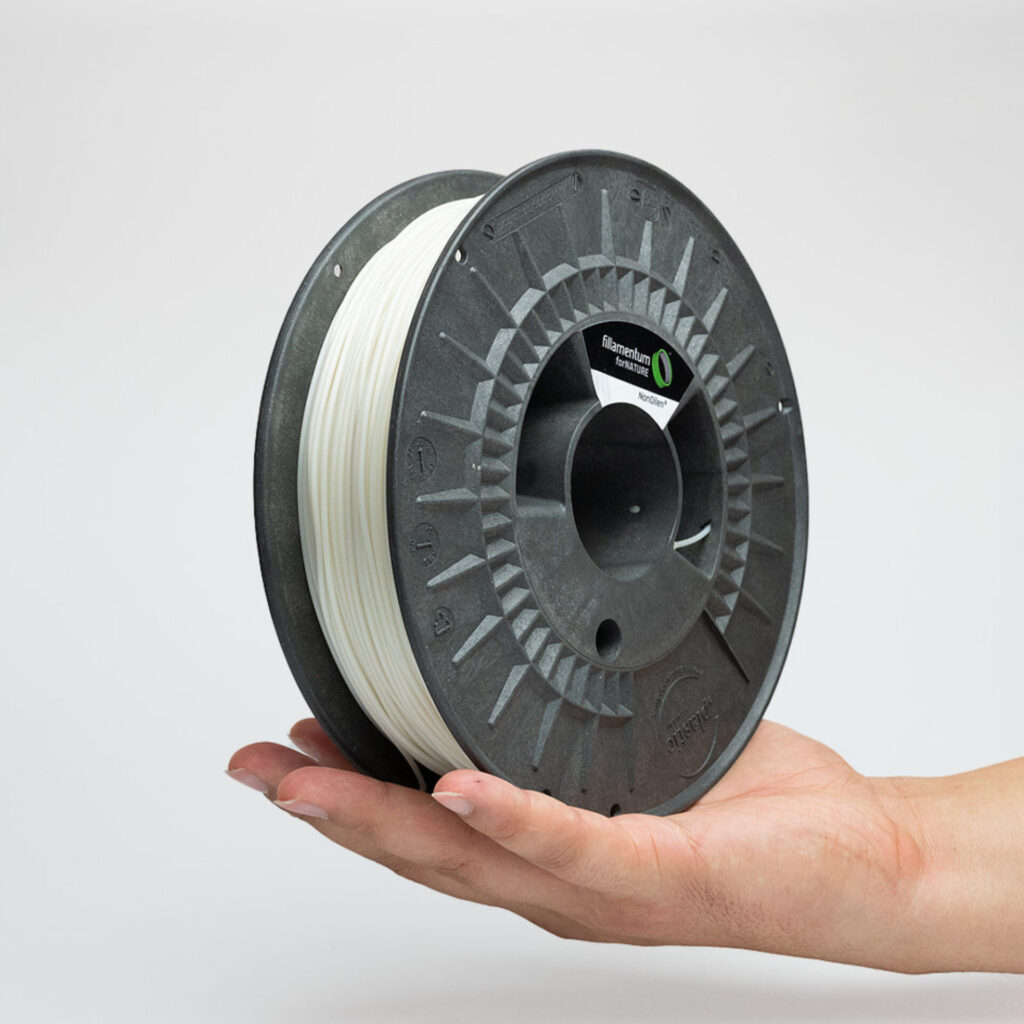
NonOilen Powers Sterilization Solutions in Cultivated Meat
A medical autoclave is a device designed for sterilization under high pressure and temperature. Usually, it’s containers, instruments or liquids in laboratory glassware which are sterilized. Thanks to this device, Tomáš Keller, his team and the company Bene Meat can grow cultivated meat in the laboratory using stem cells. What is the role of 3D printing and what role does NonOilen play in this process? You can read this and much more in the new case study.
Contribution from the Raise3D Editorial Team
 Written Kathryn Noble – PR & Content Team Raise3D
Written Kathryn Noble – PR & Content Team Raise3D
Choosing the Right PLA Filament for Your Business in 2024
Polylactic Acid (PLA) filament is at the forefront of 3D printing technologies, prized for its versatility and environmental credentials. As businesses increasingly turn to 3D printing for prototyping, manufacturing, and creative projects, the choice of filament becomes crucial. This guide provides a comprehensive overview of why PLA filament is a sound choice for business applications and how to select the best type for specific needs in 2024.

Why Choose PLA Filament for Your Business?
Choosing the right filament impacts the quality and efficiency of your 3D printing operations. Key benefits of PLA filament include:
- Eco-Friendliness: Derived from renewable resources, making it sustainable.
- Ease of Use: Requires no heated bed and is less prone to warping.
- Versatility: Suitable for various applications, from simple models to complex prototypes.
- Cost-Effectiveness: Generally more affordable than other filaments, ideal for high-volume printing.
Popularity: Polylactic Acid (PLA) filament is favored for its user-friendliness and eco-friendly properties. It is biodegradable, emits a sweet, non-toxic smell when heated, and is rigid with a variety of colors for detailed models.
Environmental Aspects: PLA is made from renewable resources like corn starch or sugarcane, making it a sustainable choice. However, its recyclability and biodegradability are limited outside industrial settings. Innovations like NonOilen, a composite of PLA and polyhydroxybutyrate (PHB), improve toughness, temperature resistance, and biodegradability, fitting the circular economy by being reusable and reducing waste.
Selecting the Right PLA Filament
To choose the best PLA filament, follow these steps:
- Assess Your Needs: Determine what you’ll be printing and the required detail and strength.
- Research Suppliers: Look for high-quality PLA with consistent batch quality.
- Evaluate Filament Properties: Consider diameter tolerance and mechanical strength.
- Test Samples: Print test objects to evaluate different filaments.
Key Properties to Consider
- Diameter Tolerance: Ensures smooth feeding and uniform extrusion.
- Color Consistency: Important for aesthetic uniformity.
- Melting Temperature: Influences printing ease and final print quality.
Common Printing Issues
Address common issues like warping and stringing by optimizing printer settings:
- Temperature: Best between 180°C and 220°C.
- Speed: Adjust for print complexity.
- Cooling: Good cooling improves print quality.
Evaluating Cost-Effectiveness
Consider purchase price, filament efficiency, and potential waste reduction when evaluating PLA cost-effectiveness. High-quality PLA can reduce failures and machine downtime, leading to long-term savings.
Where to Buy PLA Filament
Choosing the right supplier involves weighing product quality and customer service. Local suppliers offer easy returns, while online suppliers may provide broader selection and lower prices.
Conclusion
Choosing the right PLA filament in 2024 is crucial for maximizing the effectiveness and sustainability of your 3D printing operations. By considering these factors, businesses can optimize their printing processes and meet their environmental goals.
The Work of our Customer
 Written by Martin Opustil
Written by Martin Opustil
Creator Spotlight: Coffee2Go Cup by SKATCH3D
Check out the work of SKATCH3D, who has come up with an innovative Coffee2Go cup design. Made from Fillamentum’s NonOilen filament, this cup is food-safe and heat-resistant, making it a great addition to your daily routine.
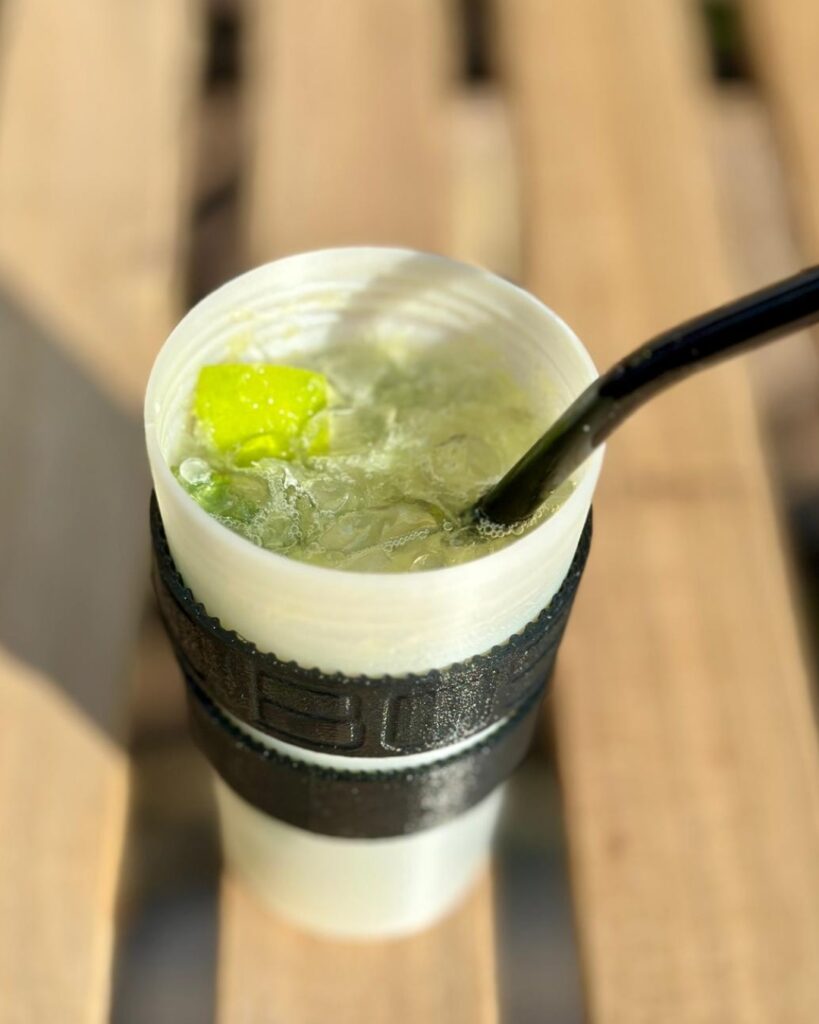

News from Fillamentum
 Written by Martin Opustil
Written by Martin Opustil
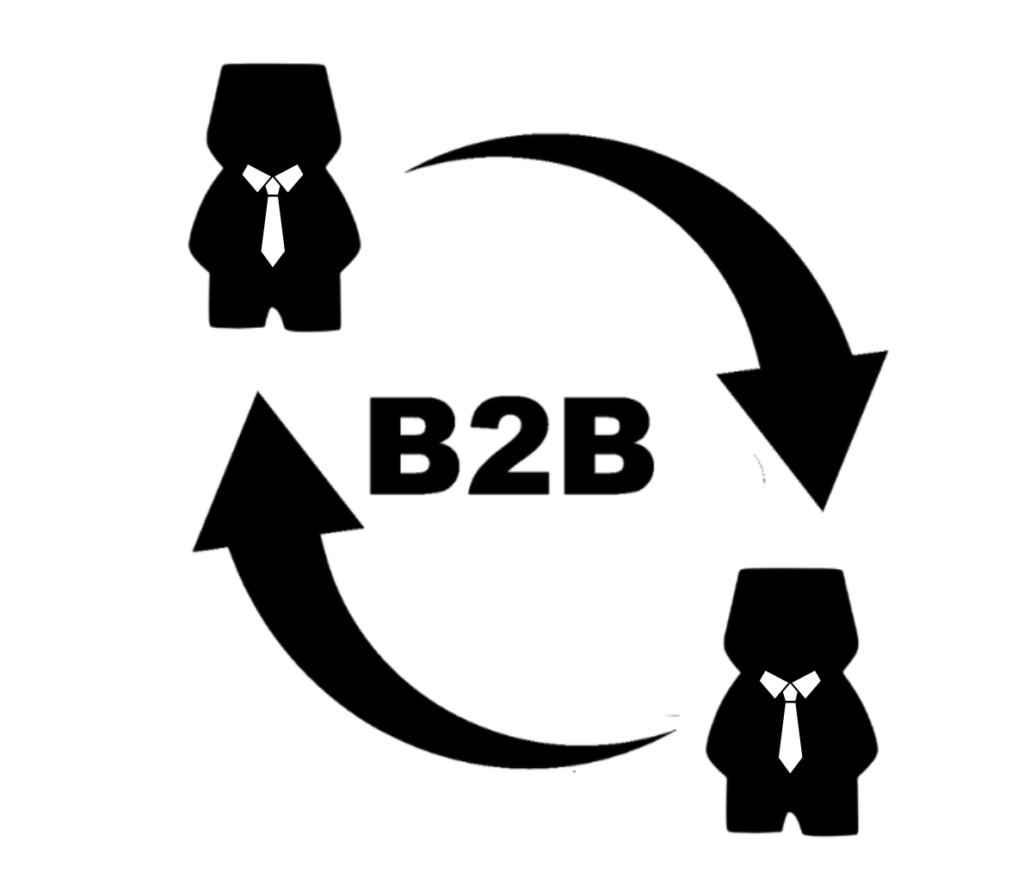
B2B Program
At Fillamentum, we value our business partners. By joining our exclusive B2B program, you’ll unlock access to special discounts, tailored shipping options, and direct invoicing – all designed to simplify your purchasing experience. Whether you’re an educational institution, a small business, or a large company, our B2B program is designed to support your growth. Join today and start enjoying the advantages of being a Fillamentum partner.

